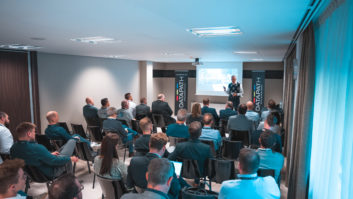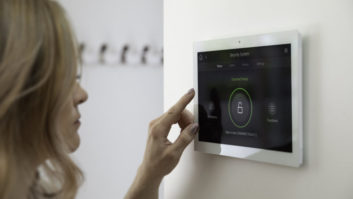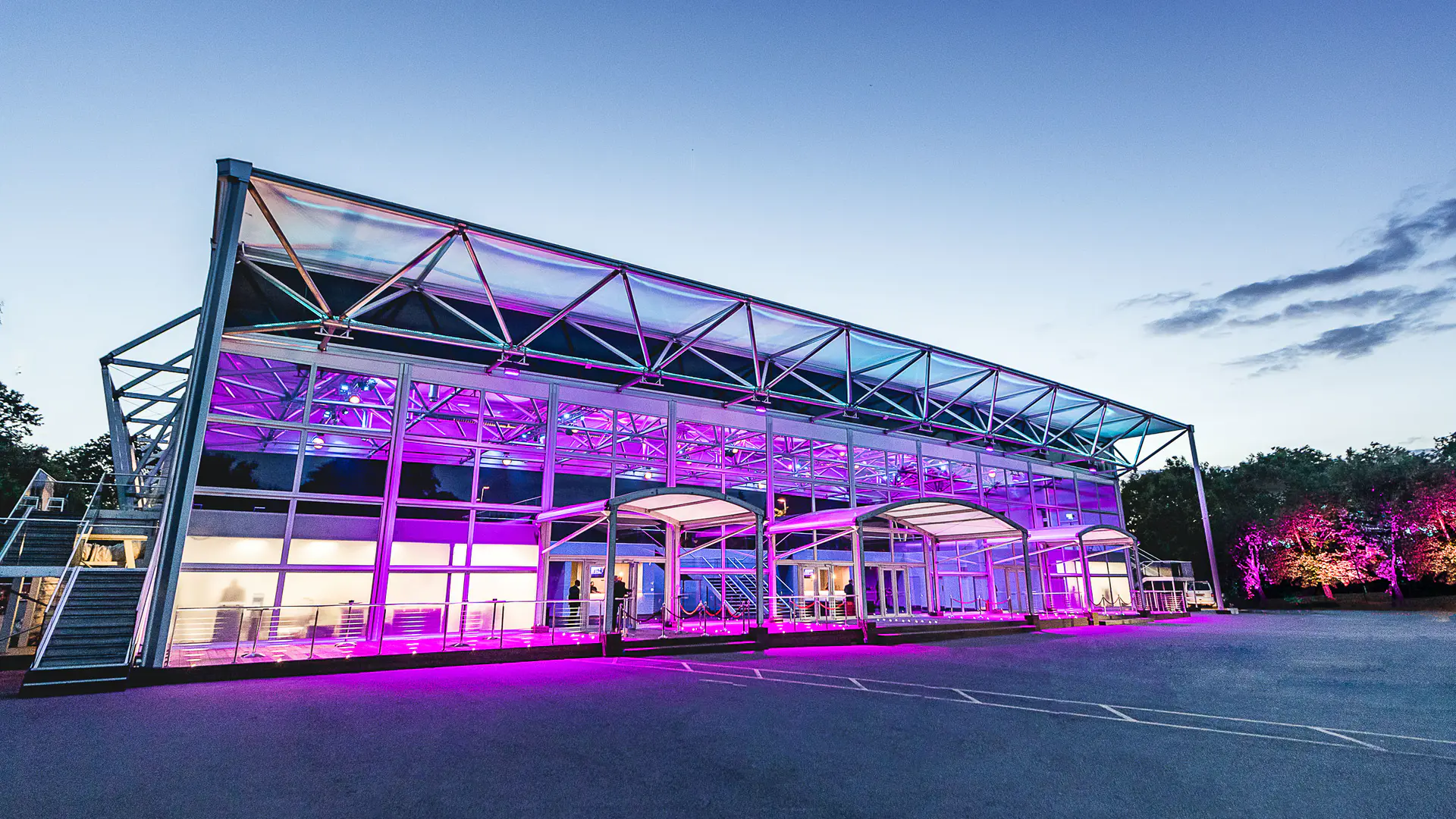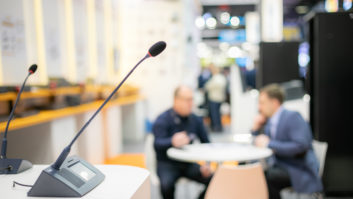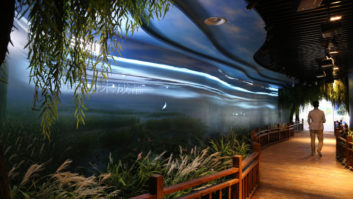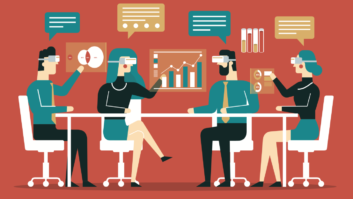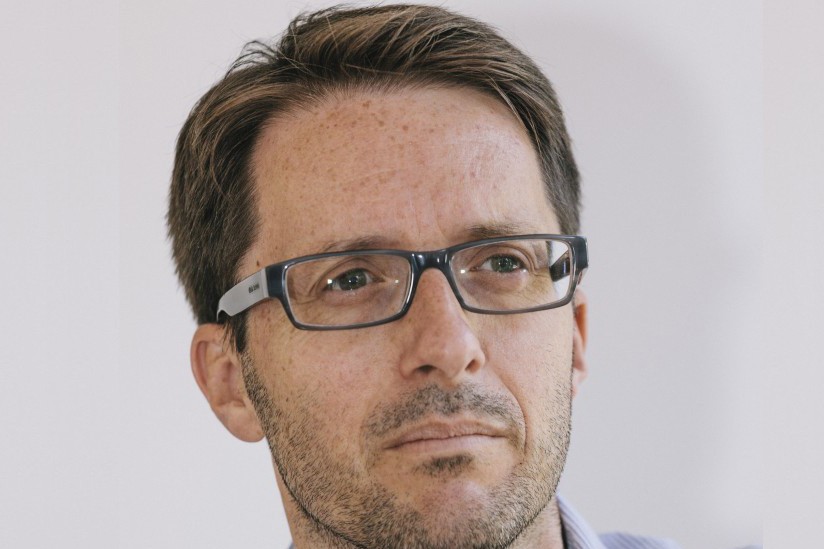
VR is developing in a number of areas, writes columnist Rob Lane.
I’ve written about virtual reality a few times in this column over the past couple of years. In some respects things have moved at pace, but overall most people would probably agree that, by today’s standards, VR’s take-up has been relatively slow in the two years since Facebook bought Oculus Rift for $2 billion.
Mark Zuckerberg has been quoted as saying he sees Rift (and by definition VR) as “a platform for many other experiences” and also a “new communication platform” that will “change the way we work”. We’re still some way from the last two coming true, but VR is certainly becoming a platform for experiences – in no small part due to the hard work of AV integrators.
Figment’s imagination
Perhaps more than any other company, Figment Productions has been pushing VR to the masses, through its use of the technology in theme park rides. It was the first company in the world to deliver a rollercoaster permanently equipped with VR on every seat (Galactica at Alton Towers), and according to CEO Simon Reveley the same conversations about VR’s pros and cons occur across all sectors – including with corporate clients.
“This is the very definition of a disruptive technology,” Reveley told me. “VR, AR, MR, XR – whatever label you wish to give it, whatever specific variant – is a technology that’s evolving at a rate of knots. VR rollercoasters are a great introduction, but there’s so much more to come from the technology, across all sectors.”
This is certainly true, and it is perhaps the more practical uses of VR that will ensure it becomes one of our technology norms rather than entertainment-based applications.
Finnish company VividWorks has embraced VR as a way of augmenting its Cloud-based AR product configuration, visualisation and sales management platform, VividPlatform. (Full disclosure: VividWorks is one of my clients.)
The latest iteration, VividPlatform4, utilises VR as part of an in-store ‘showroom’ that also includes 4K displays, extending its existing AR capabilities and providing real-time access to VividPlatform in store – a “world first” in omnichannel retail.
It’s this kind of use of VR that will see it become part of our everyday lives, and it surely won’t be long before Zuckerberg’s dream of it becoming a new comms platform for work and play becomes a reality.
Glasto AV
One place where VR is yet to resonate is at the Glastonbury Festival. This year I was lucky enough to attend, for the first time in 25 years. This is a very different Glasto from a quarter of a century ago, of course, when contacting your friends meant leaving a Post-it note on a barn door, as opposed to calling or tracking them with a smartphone. With many more stages, areas and events to choose from, it was an amazing experience, with AV never too far away – although I was unable to find any trace of VR.
I was surprised by the innovative use of AV in the dance-orientated Shangri La and Block 9 areas, a festival within the festival. Here, it was possible to enjoy eye-boggling projection mapping, multiple projection screens arrayed in a circle within a staged dance area and innovative lighting turning a treehouse bar into an incredible twinkly wonderland – all accompanied by enough dance music to make your ears bleed.
The personal nature of VR possibly excludes it from Worthy Farm for now, although the ‘silent’ disco that kept many campers awake after hours (you can’t hear the music, but you can hear all the revellers singing!) is an obvious choice for a future festival. Dancing with headphones and HMDs might be a health and safety compromise too far though, so perhaps this needs a little more thought…
What’s inevitable is that by the time Glastonbury returns in two years’ time, VR will have found itself a home somewhere on the huge site. My money is on the experiential rather than the practical – unless Zuckerberg gets a shift on and festivalgoers are encouraged to don HMDs as festival-appropriate steampunk attire and their comms devices of choice!
Much more likely is the adoption of VR for the home Glasto experience, with the BBC trailblazing tech as it has done so many times in the past. VR might not be able to replicate the feeling of mud sucking on wellies or reproduce the heady smell of Class B drugs, but it’s the closest non-festivalgoers will get to actually being there.
